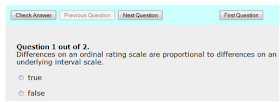It's not easy recruiting a coalition, and then having it hang together in the tough times. To maintain context, I'm not talking about countries but rather companies. And I'm talking about doing a project via coalition management.
If it sounds ugly, it sometimes can be. On the other hand, it's often the only way to scale up, and it's the only way to cement [or engage] disparate constituencies needed for project support, both politically and in the budget wars.
Of course the industry name is 'teams', and supposedly the basic governance is laid down in a teaming agreement, subsequently written into a contract.
By whatever name, it's a coalition.
Rule #1: Companies don't have friends; they have interests.
The impact of Rule #1 is that friendship on a personal level is all well and good, often required, but friendship ends at the logo's edge.
Trust is more important than friendship because teaming agreements and contracts are only paper. The fact is: two companies can be teamed on project A and competing against each other on project B--at the same time. Their interests are served differently--simultaneously. Trust in the integrity of the relationships is what makes it possible.
Rule 1.1: Some interests are private; their influences are felt even though things are otherwise private.
Rule #2: The really big decisions are often opaque and laced with politics.
They say that a completely rational person can not make a decision because paralysis of analysis will set in. A dose of passion, strongly held beliefs, or sometimes even anger are necessary ingredients to catalyze the decision. Usually, the meeting is pretty small where the decision comes down. If you're in the room, great. If you're in the room and at the table, even better! If you're the 'decider', think also about those outside the room: their's to serve!
Rule 2.1: Some decisions are deliberately deceptive to protect interests; other decisions may be unintentionally delusional, borne of unjustified optimism.
Rule #3: Unified command is no panacea for conflict resolution.
General George C Marshall invented 'unified command' in 1942 as a means to govern the combined forces of the US and the UK. In 1942, the idea was radical as a command structure between countries; it's objective was to obviate the separate but somewhat equal command structure of WW I.
As it did not do then, it does not do today in large scale project management: forestall disagreement. What unified command does do is bring all the project managers of the team together under the leading team manager where the intersection of common interests can be managed for the common good. Unified command forces the exposure of interests and the melding of heterogenous objectives, strategy, and practices--as appropriate. [Can't forget that last little tag]
Rule 3.1: Trust within the unified command will be in direct proportion to the honesty of the exposure of interests.
Rule 3.2: You give up power to be in a unified structure; you give up power and identity to in a joint structure. Joint structure are rare in business, less so in government.
Rule #4: It's not agile, so patience and perservence
Moving a coalition along is sometimes painstakingly slow. Somehow, the weakest link--and slowest partner--is never your own company where you have some direct influence over performance. Indeed, the weakest link is often that company who's interests are not vitally engaged. "We care... but not that much".
There are, of necessity, many redundant elements. That's good for all the reasons redundancy is good, but it's bad because it's the antithesis of simplicity. Simple is that which possesses the least complexity for the task at hand.
I've got more rules, but for another time.
Bookmark this on Delicious











